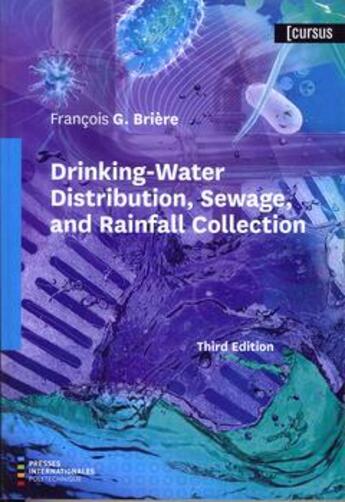Résumé:
Drinking Water Distribution, Sewage, and Rainfall Collection is the first textbook produced in French and English entirely devoted to practical hydraulic problems as they occur in modern cities. It looks at the design and application of equipment for drinking water distribution, runoff and ... Voir plus
Drinking Water Distribution, Sewage, and Rainfall Collection is the first textbook produced in French and English entirely devoted to practical hydraulic problems as they occur in modern cities. It looks at the design and application of equipment for drinking water distribution, runoff and sewage collection. Fundamental hydraulic principles are presented clearly and their application is illustrated in examples representative of real-world situations. Exercises and problems enable students to test their knowledge in each chapter. Specific topics include the measurement of sewage flow, sewage pumping stations, pump selection, inverted siphon, and characteristics of pipes available on the market in a wide variety of materials. The textbook also covers issues such as water hammer and other overpressures, dead and live loads, underground pipe installation, water supply to high rise buildings, the design of sewer and water service connections, water flows and volumes for fire fighting, water intake and intake pipes, fire hydrants, water inlets and valve settings on water networks, sewage outfall, pipe freezing and corrosion, thrust blocks and restrained joints, culverts, etc. One chapter is entirely devoted to waterborne diseases, chemical contaminants and dangerous gases that accumulate in enclosed spaces. Engineers, technicians and scientists can use the textbook to learn the basic requirements for designing and evaluating sanitary storm networks, sewage networks and water distribution networks.
Donner votre avis















